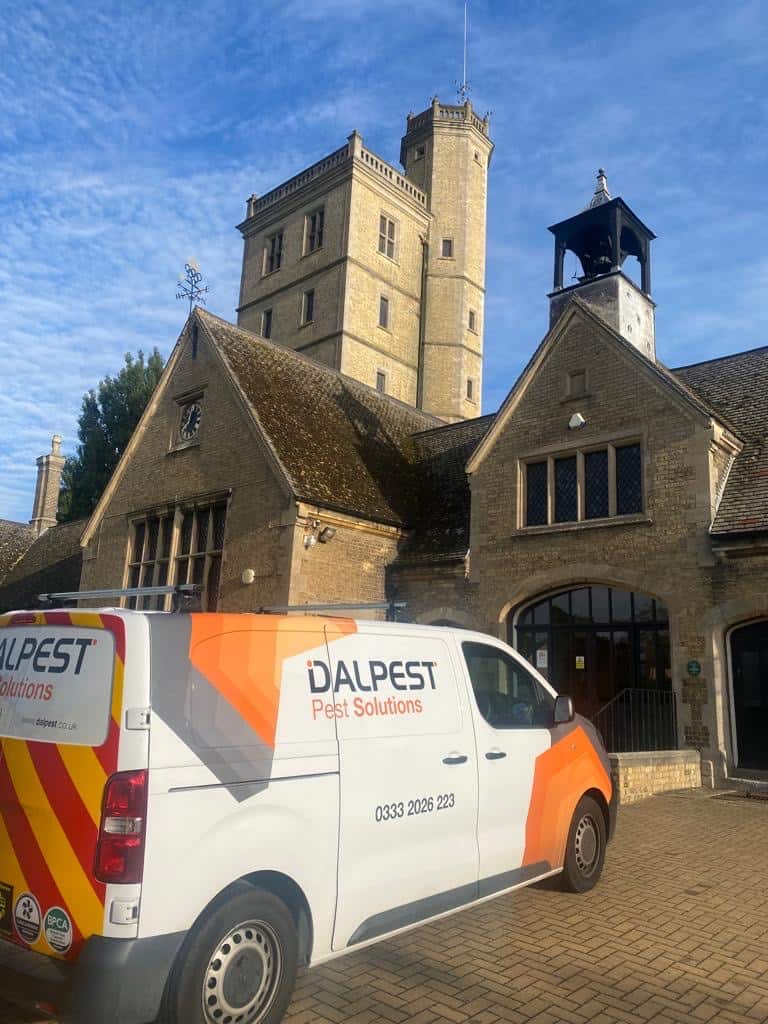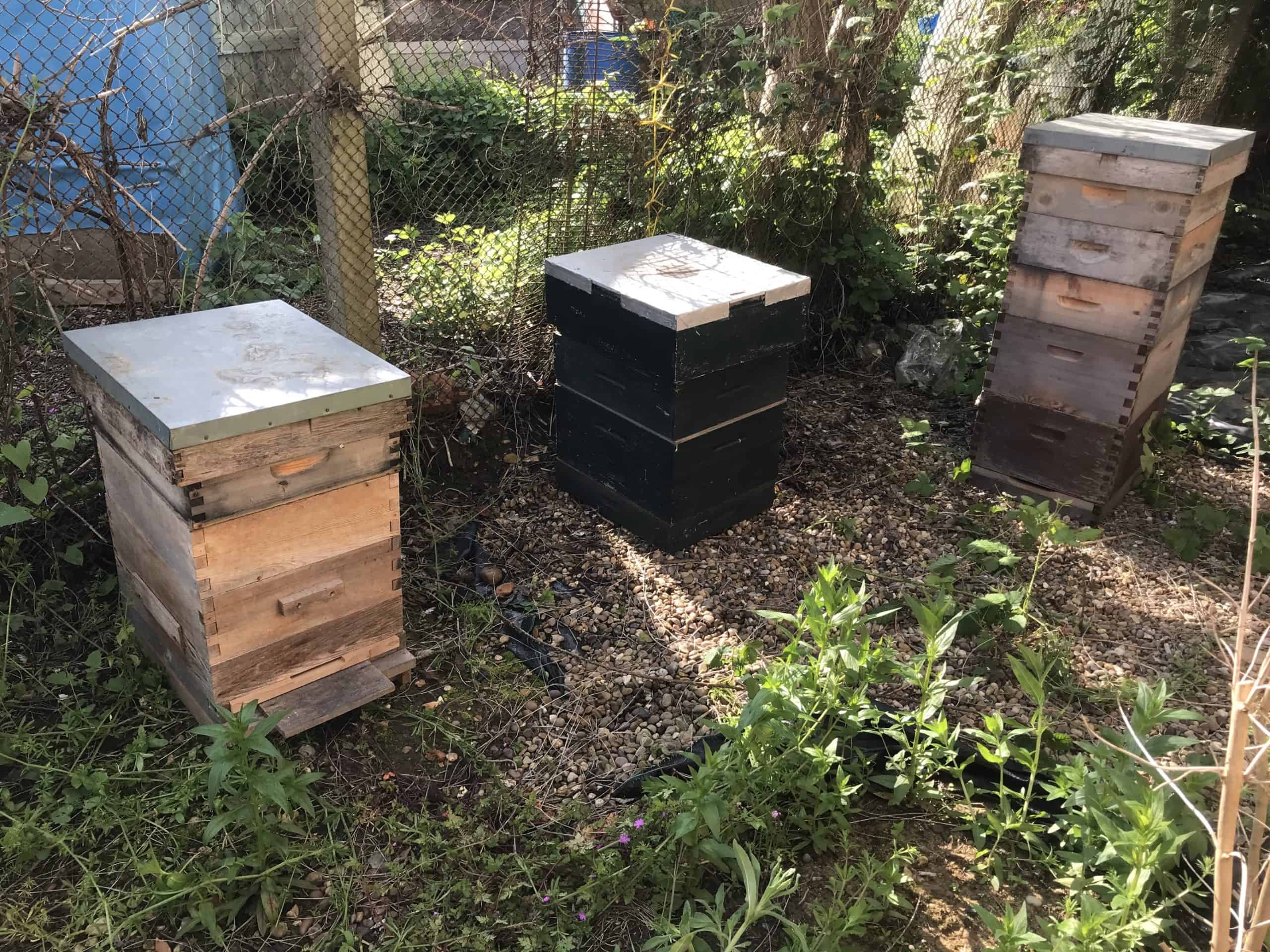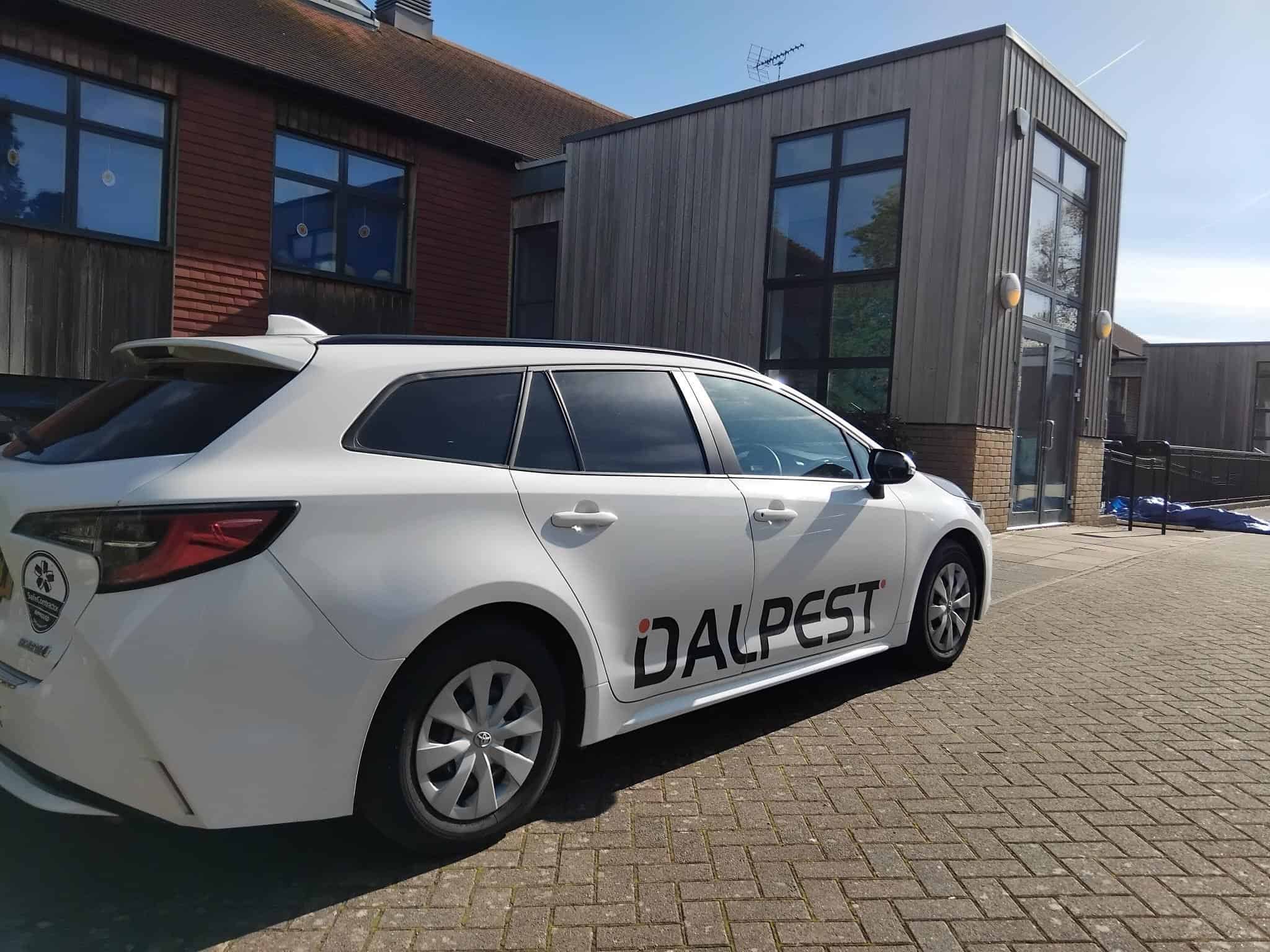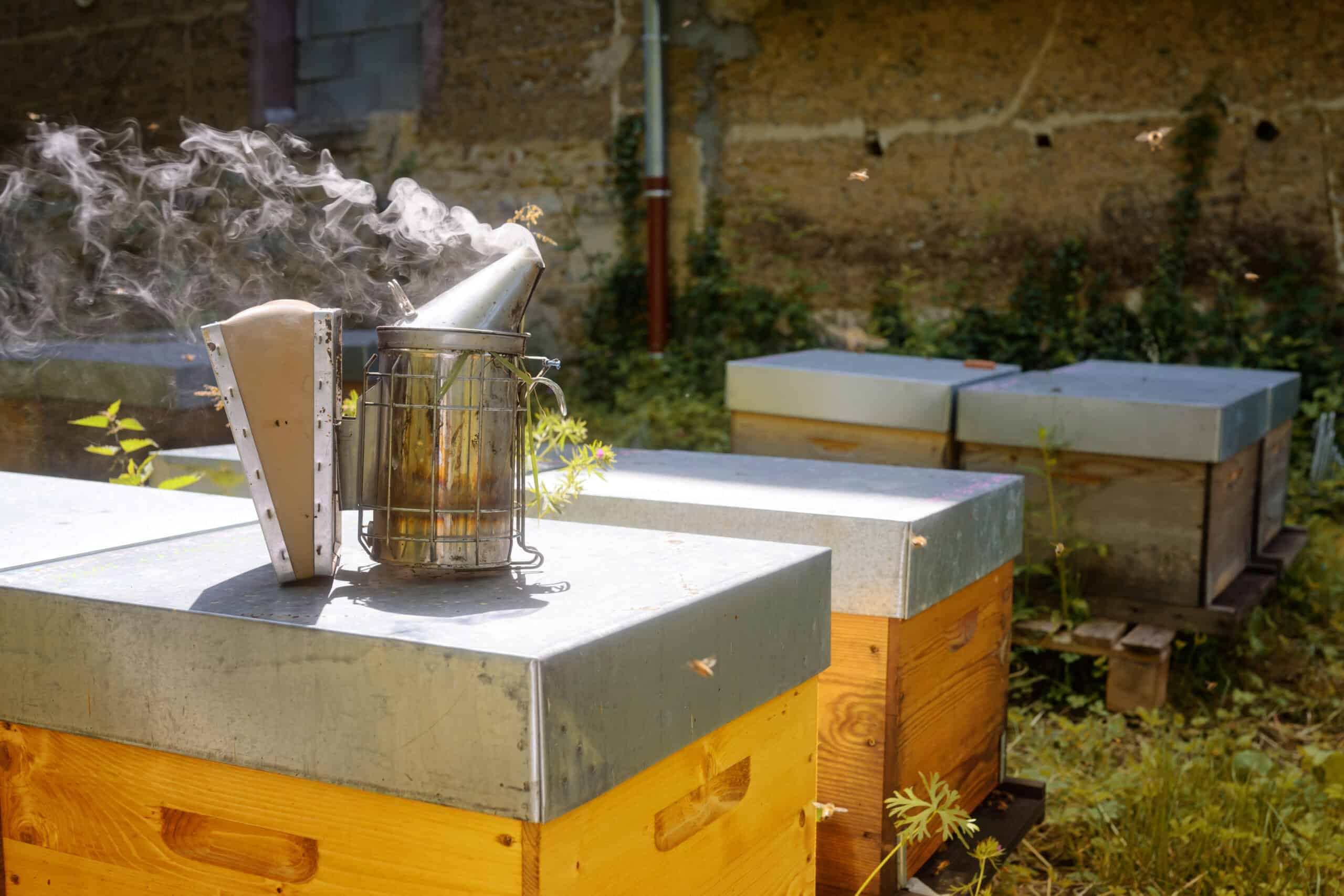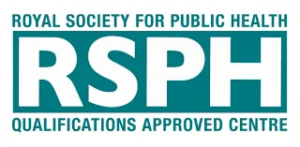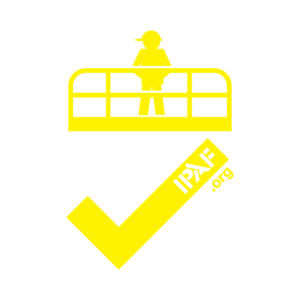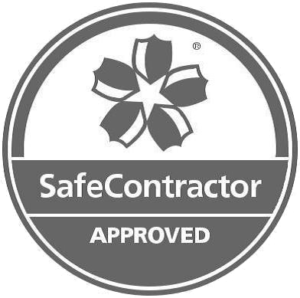DALPEST Pest Solutions are proud to offer a new service for the first time this year. Our bee removal service has provided a valuable new option to our customers.
We have been collecting local swarms for as long as we have been in operation, however this new service is specialist and requires extensive knowledge as it involves removing the insects from inside of buildings.
There are not many companies able to conduct this type of work within the local area. We even go one step further, and to add greater depth to our offering as well as removing the bees we relocate them to our own set of hives based here at the office.
The mission, should we choose to accept it…
We were delighted to hear from the Bedford Hall in nearby Thorney village recently about an issue they were having with honey bees. A colony was very active on site and they wanted to safely remove them – the only catch, this was a grade II listed building and the bees were located inside right at the top of the tower!
That’s approximately 15-20,000 bees plus honeycomb to remove from inside the walls at the top of 100+ steps up a very narrow spiral staircase! If that wasn’t challenging enough, the specification stated that the building must remain in its current state due to its listed status so any work done to remove the bees had to be done extremely carefully.
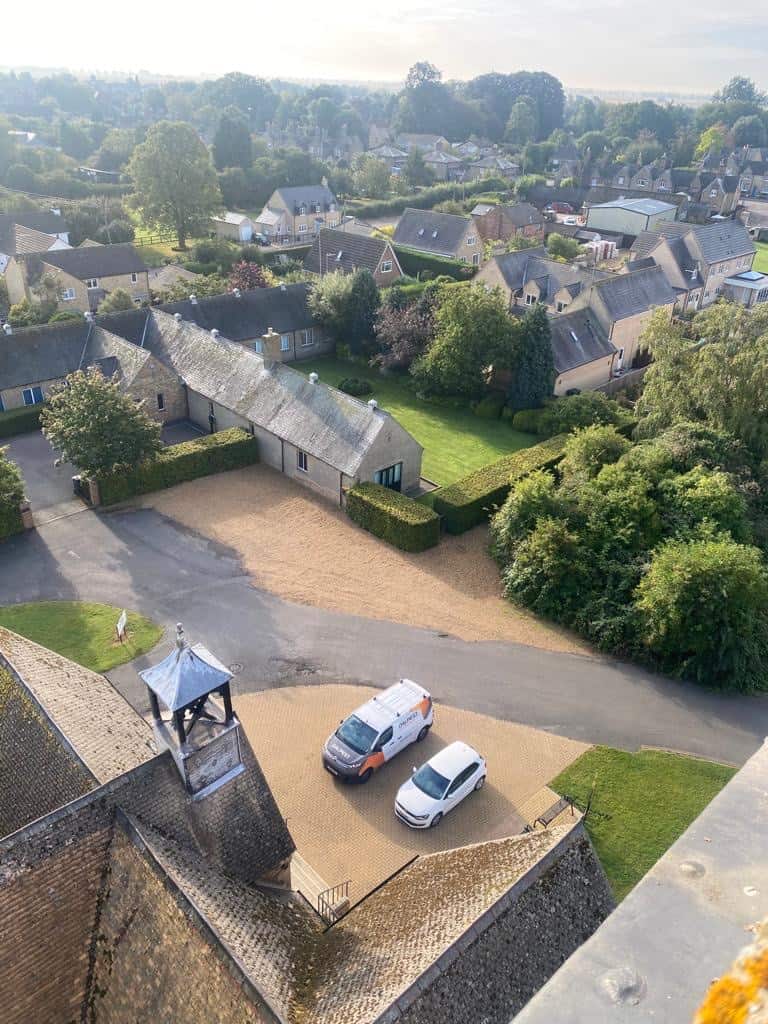
This was something that the DALPEST Pest Solutions team wanted to be involved with, and confidently knew that we could complete successfully. Although the team get excited about work like this, careful planning is done to ensure the right techniques are being used. In a case such as this, the first thing to do is assess the size and position of the colony, and for this we conduct a thermal survey.
The thermal camera clearly highlights the exact position of the colony by displaying a white or pale image where the heat source is present.
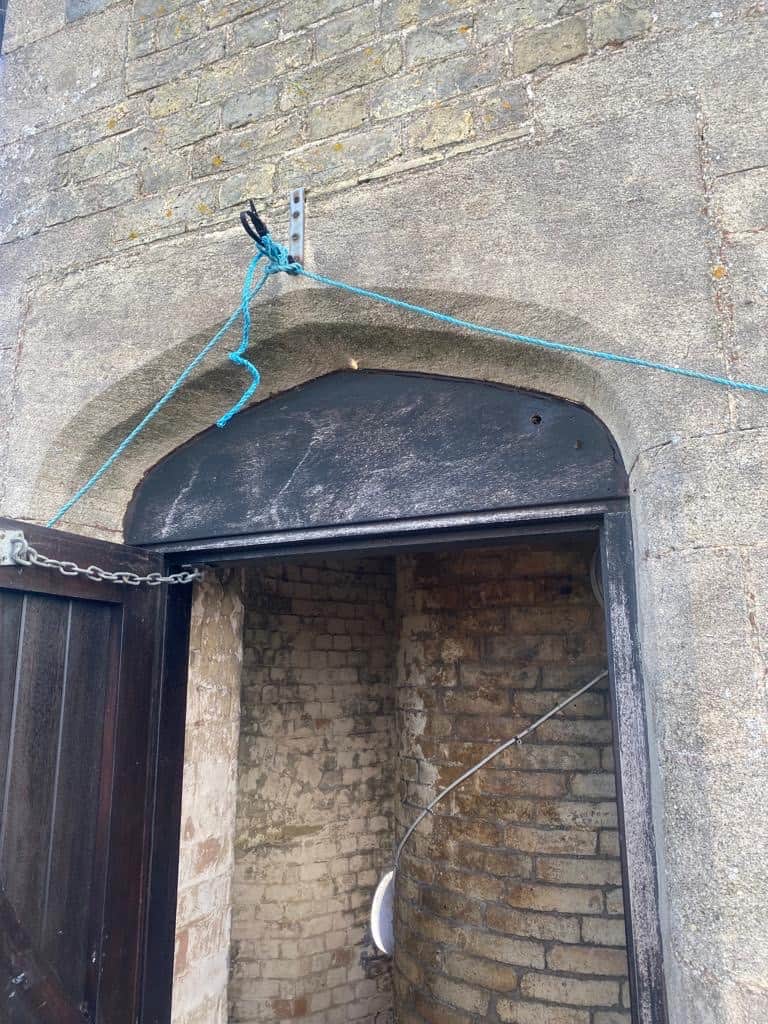
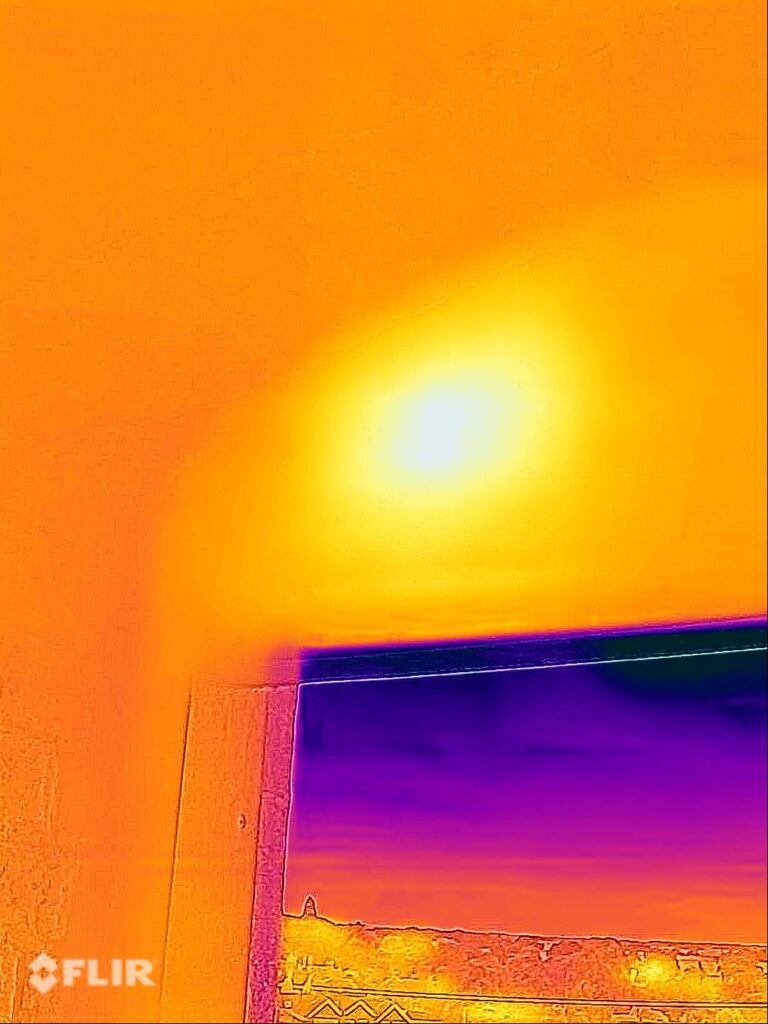
Once the team knew where the colony of honey bees were then they could arrange to collect them.
So, with space prepared within the hives it was time to collect some bees.
DALPEST’s Lead Technician Richard Day had quite a task on his hands, and quite a few stairs to climb!! Added pressure was applied on removal day as the venue was also hosting a wedding later in the afternoon so everything needed to go as planned.
Once all the equipment was in position the boarding was taken down and then the bees could be removed from the cavity above the door. This process is done using a special bee vac which safely and gently extracts the bulk of them from the comb into a temporary container, once this is done the comb can then be cut away.
This was a tricky job in itself as all the comb needed taking away, it was then placed inside some frames and these were slotted into a nuc box. The bees were placed on top where they could then settle back down together. This acts a temporary home for them while they are transported, they can remain within this box comfortably for a few days until they are transferred to the hive.
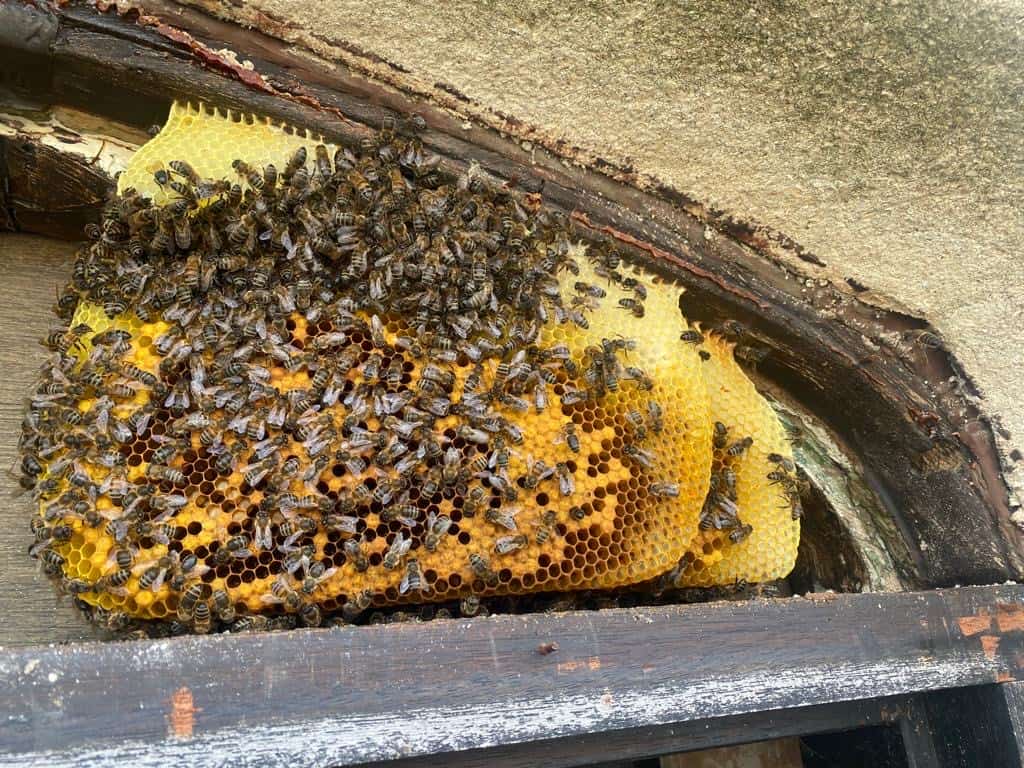
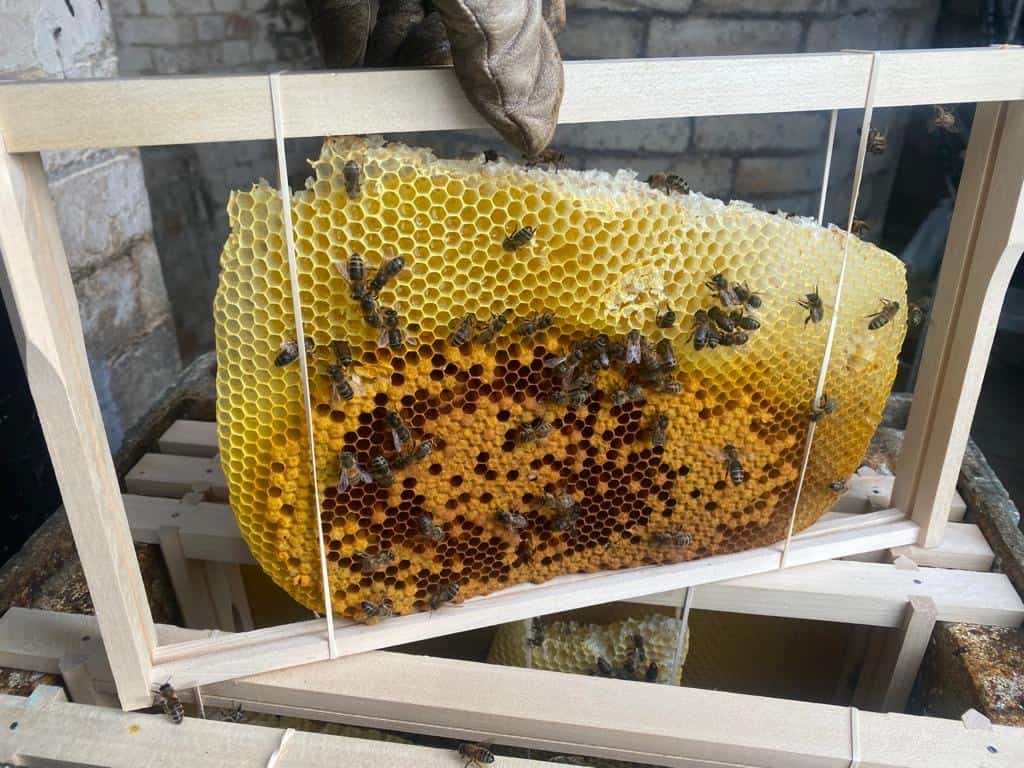
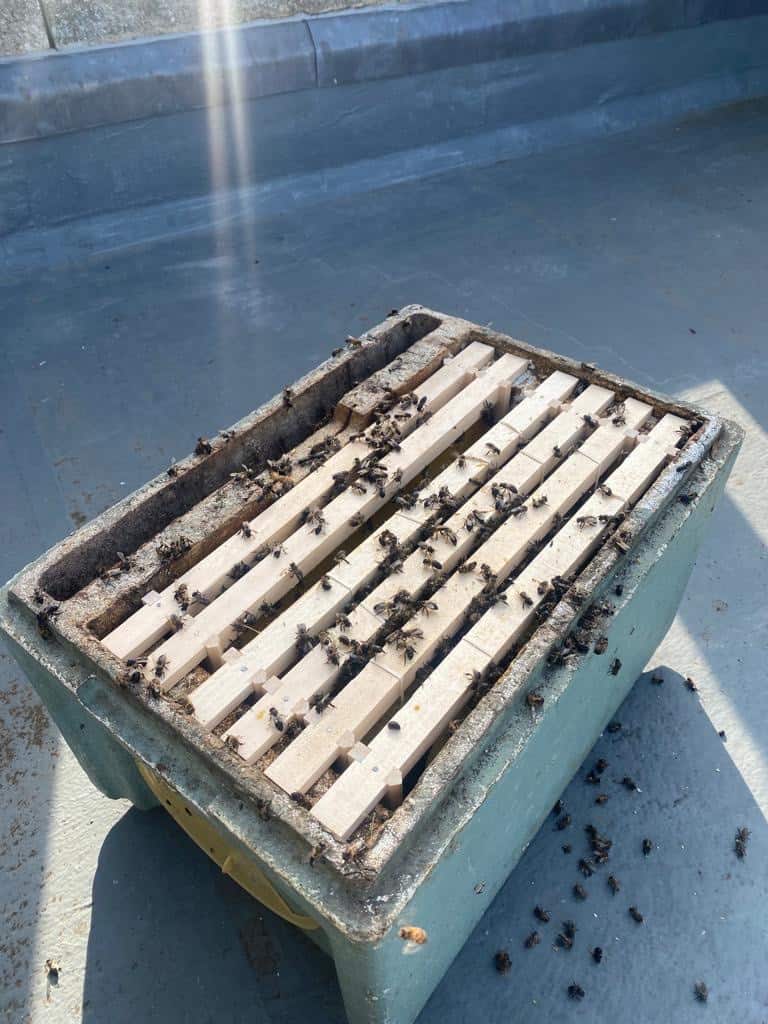
Needless to say this all went without a hitch, no weddings were invaded by swarms of bees and the customers were thrilled to have them safely relocated. DALPEST have even promised them a few jars of honey from their own bees once it is ready!!!
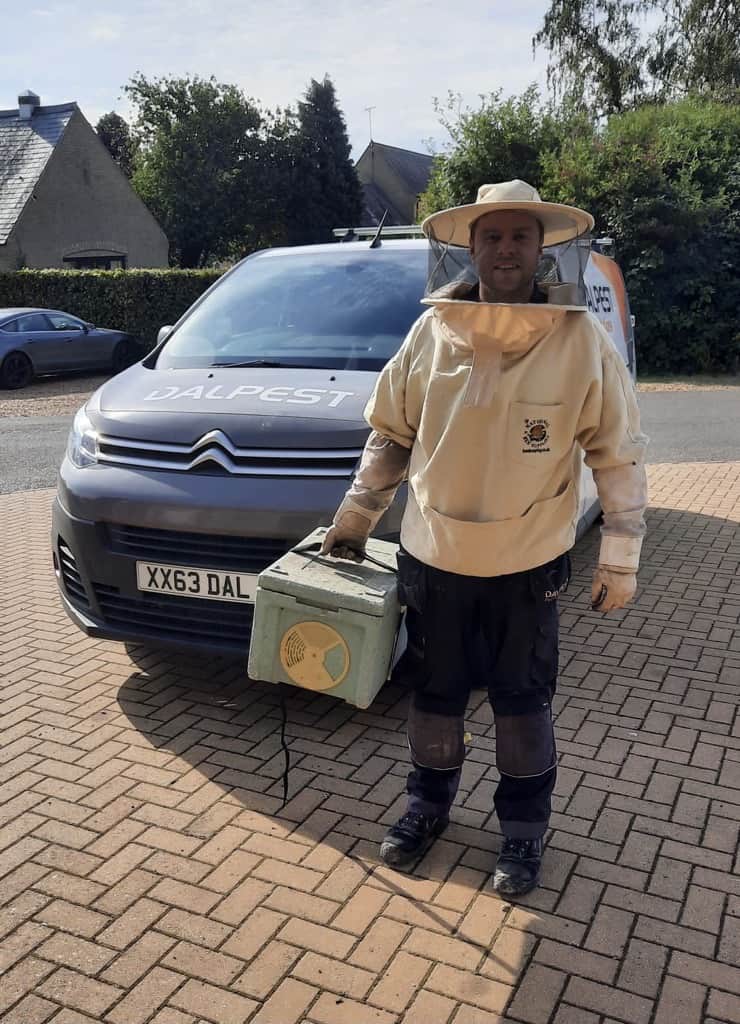
Don’t disappear just yet…
In case you forgot or didn’t already know, the DALPEST Pest Solutions team are based in Peterborough and Milton Keynes and are RSPH Level 2 qualified pest controllers and members of the BPCA (British Pest Control Association), so you can talk to us about any pest control requirements you may have on 0333 2026 223.
We would love to hear from you.

